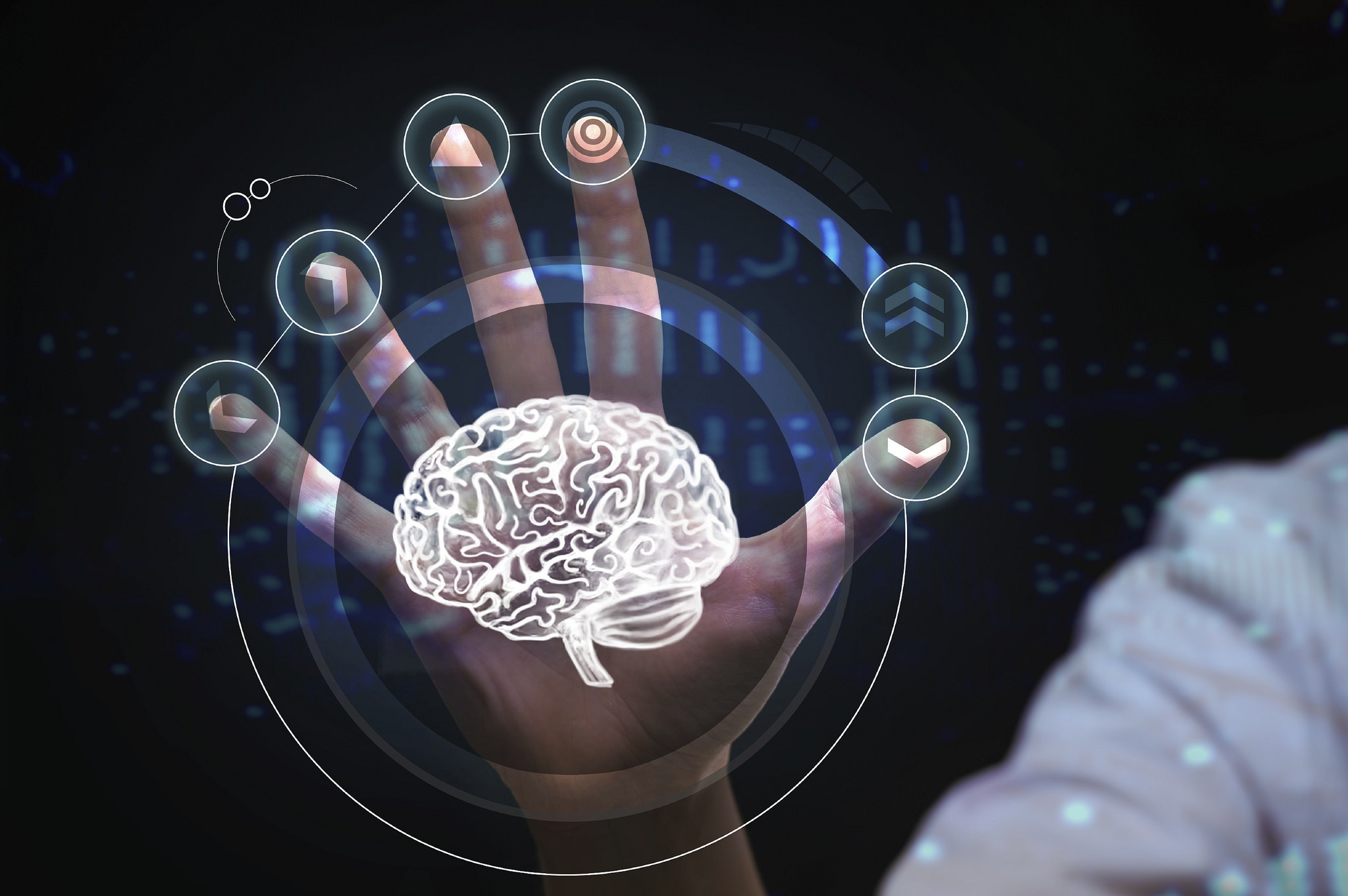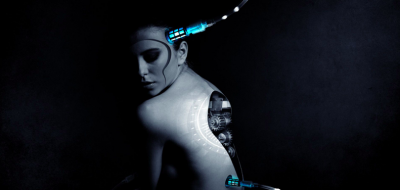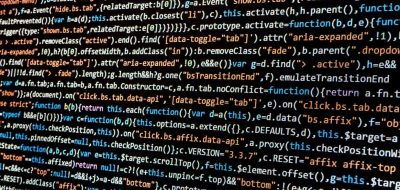Civilization diseases, societal ageing, new microbe mutations that evade identification coupled with faltering health care systems are all inevitably a part of our near future. Medicine confronts such challenges with attention and hope, even a growing appetite as it observes the rise of the latest technologies. Doctors, researchers and patients have good reasons to be upbeat about the future. Medicine of the future.
Can we be healthier?
I wish to highlight areas of overlap between technology and medicine in which I sense a potential for particularly momentous changes. As endeavors to prolong human life increasingly turn out to be futile (nothing appears to change the fact that people aren’t likely to live beyond a century and a dozen plus years), my imagination is inspired by other events which I see as true challenges. What concerns me the most is how rapid advances in IT may help humanity prevent diseases more effectively, detect them sooner and be less anxious about ageing. More specifically, one may wonder whether patients will accept “wearable” electronics and electronic armbands that will diagnose them without the direct involvement of a physician? Is it possible to use devices which, once inserted into the human body, will serve as “sensors” and detect illness symptoms? Will we ever see diagnostic systems for the early detection of e.g. Alzheimer’s?
Virtual surgeries and education
Before moving on into an even more remote future, allow me return for a moment to what is already in the past. In 2016, my attention was drawn to a curiosity of the kind that I think will soon no longer be seen as odd news and will become commonplace. I am referring to a pioneering surgery that involved virtual reality. April 14, 2016 made the history of medical practice and education. On that day, Shafi Ahmed, a cancer cell specialist, performed a surgery using 360-degree cameras that allowed him to superimpose images of medical data and healthy organs on his view of the patient. The cameras showed precisely how the doctor gradually removed pathogenic cells from the patient’s body. The students who watched the procedure on computer monitors could use special apps to actively respond to the operation or interact in real time. One can easily imagine what a valuable teaching aid this provides to today’s students allowing them to observe such procedures in class.
The above shows that virtual reality is becoming more than a fun technology. In fact, we are dealing with a whole new way of conducting professional training. This, by the way, makes me think of just how difficult it is going to be to continue believing in the value of conventional printed medicine textbooks. After all, a single online video of the kind described above is equivalent to millions of pages of texts containing medical knowledge.
Doctors – see where technology will take you
The best commentary on the above example are the words of Daniel Kraft, an oncologist, a futurologist and the author of a series of specialized training courses called Exponential Medicine offered in the Silicon Valley. In an interview for the British weekly The Guardian, Kraft said: “Today’s technologies, especially those available on a variety of devices, may radically transform health care around the world (…). We need to let doctors and nurses and patients and technologists and pharma and biotech understand where technology is and where it is going”.
Kraft is confident that today’s inventions may revolutionize medical care and patient treatment. The radical change that is afoot will have consequences that are not only medical but also economic and sociological. “Imagine, says the oncologist, that patients don’t need to come to a clinic for their next electrocardiogram. Instead they wear a smart Band-Aid “patch” that sends the same information 24/7 to their doctor’s surgery where it is immediately interpreted.” These words forebode a trend that is now commonly mentioned in projections about the future of medicine.
Your home is your hospital
Medicine of the future may transform the way doctors interact with patients and alter these two roles, which haven’t changed for years. Thanks to modern technology, patients gain mental comfort and convenience as they no longer have to make regular visits at a hospital or a doctor’s office. Their future is that of a cozy home in the presence of small devices that will allow them to monitor their bodies with great precision. As a consequence, patients will no longer depend on a relationship with a single medical specialist. Data retrieved from a handy diagnostic device can be transmitted over the Internet to many doctors, thus ensuring more credible interpretations. This will also affect the role of the doctor who, no longer preoccupied with acquiring disease data, will be free to focus on its interpretation.
Examined by an armband
The future of medicine is one of personalized easy-to-operate medical devices. The process of patients growing more independent of doctors is helped greatly by the common accessibility of smartphones. Their growing processing power and personal nature are likely to result in a proliferation of apps designed to record and process information about our health. The smartphone may well become our personal medical “hub” for acquiring, storing and sharing knowledge on our physical condition. As some people believe, during this year, the global market may see the arrival of devices that allow patients to run tests that could previously only be performed in a doctor’s office. We will see a continuous improvement of electronic armbands designed to monitor multiple vital signs such as the heart rate, body temperature, hydration level and even motoric performance. An example of such a device, available even today, is Viatom Checkme, a band designed to record a growing range of data. Its latest version tracks the pulse rate and other heart performance indicators, blood pressure, sleep quality and oxygen level.
Will personal easy-to-operate diagnostic devices soon include sensors placed on any part of the body? Work is already under way to develop sensors that process signals from various parts of the human body. For instance, a sensor placed in the mouth will examine our teeth, analyze our breath and even diagnose the performance of our jaws. All this knowledge will certainly be useful before visiting a dentist or a pulmonologist.
Robots floating in veins
What will the medical revolution look like from the perspective of a doctor looking to receive enhanced working tools? The field to watch is nanotechnology. It is said to have an enormous potential to alter today’s medicine. It also holds a huge promise for the world of science. It is by means of nanotechnology that we will be able to gather the previously unavailable information on our bodies, physiological processes and brain function.
Imagine electronic organisms inserted into our bodies and moving around freely. Such microscopic robots will be able to provide early warnings on an emergent disease. Capable of examining our organs, blood and body temperature and even photographing us from the inside, robots will gradually become a tool most valued by physicians. And what if such devices learn to communicate with one another? Will they be able to create a smart network, a link that conveys information from multiple human bodies? A computer the size of a smartphone once used to be inconceivable. Perhaps it is now to prepare for the most unthinkable scenarios.
Machines at operating tables
Let us continue to talk about robots. The robotization trend is often discussed in the context of artificial intelligence. Digital reality critics point out the drawbacks and dangers of widespread automation. Robots are increasingly commonplace in automobile and household appliance factories and may soon enter the operating rooms of modern hospitals. Robots will take over some of the complex tasks performed by doctors and directly serve patients. In California, a prototype was developed of a machine capable of making injections into the human arm. Machines are expected to carry out analytical tasks soon and diagnose people based on blood samples. The robots used in surgeries have become a common sight in many hospitals around the world. Their growing market is projected to be worth ca. US$ 6.5 billion by 2020. One increasingly popular system is the da Vinci which, fitted with 3D vision, is capable of performing surgical procedures. Further competition in the field of robot-assisted surgeries can soon be expected to come from Google which is busy developing a similar device in collaboration with Johnson&Johnson.
Tech companies take it all
Today, medical software is being deployed by such giants as IBM, Google, Facebook, Microsoft and Apple. According to The Guardian weekly, the value of the medical applications available to the average person over the Internet alone will rise to US$ 163 billion by 2020. By investing funds and intellectual potential in these fields, such corporations obviously hope to generate a hefty return in the future. Artificial intelligence, Big Data and nanotechnology are all changing today’s world. Their common feature is applicability in every area of life. It is therefore quite obvious to me that the next big step to be taken by Silicon Valley companies will be to acquire competencies in and influence medicine and the pharmaceutical industry.
Note that in some parts of the world, societies are ageing. More funds are likely to be invested in enhancing the comfort of the people who, even in their 80s, will be eager to pay dearly for a way to slow down their ageing. Changes in attitudes and aspirations to extend one’s lifespan to the maximum is certain to drive those who make decisions about advances in today’s medicine.
Natural symbiosis
All things considered, I believe that the marriage of technology and medicine is not only about profit. The two are made for each other – they are a match made in heaven. Today, the ultra-powerful IBM computer Watson, which I referred to in previous articles can do more to advance medicine than an entire generation of scientists. Its technological potential for data analysis has made it the machine of choice for analyzing astronomical amounts of data on medications and diseases. Its precise outcomes will help to advance medical projects that perhaps would never see the light of day without this famous computer.
Related articles:
– Only God can count that fast – the world of quantum computing
– Machine Learning. Computers coming of age
– The invisible web that surrounds us, i.e. the Internet of Things
– Surviving in the digital age, future-proofing your business
– Synthetic biology. Matrix, Dolly the Sheep and the bacteria of the future
– The brain – the device that becomes obsolete










Tom Jonezz
Exactly so, only I suggest that AI’s impact on some of the traditionally blue collar industries (although many are no longer blue collar) named above (such as automotive) will likely be less than many white collar, professional industries, like Medicine and Law.
Welcome the days when you can get a doctors appointment without notice or have your Conveyancing done by in a competent manner at a reasonable cost with any degree of confidence.
There are many layers of meanial work…
John McLean
I have lived in countries with universal health care and find it generally a good idea. There are absolutely a huge number of people in the US that would like to start at least moving towards something like that stateside. However, insurance companies are huge businesses, and also, America is an enormous country with a diversity of different opinions. Someone in a progressive state may hope we have national health care soon, but someone from a more conservative state may hate the idea and fight against it just as hard as the other fights for it. Of course, that’s a generalization, as I am from a rural, conservative area and myself and many others there do want universal health care coverage, and there are some in traditionally liberal areas that hate the idea, but just as a rule, it falls into that sort of pattern. So you have different factions of the country that argue about it, huge businesses entrenched in it, and some honest downsides to universal health care that are reported and make people hesitant to proceed into the unknown. Basically, it’s a complicated issue.
Adam T
Even if autonomous weapons didn’t already exist, interested geeks are going to make them at home as coding projects for use with nerf gun turrets then upload the source to the internet where anyone else can use it with real weapons.
All you can do is make attaching a real weapon illegal, except that if you’re already operating beyond the law that’s not a real big disincentive.
JohnE3
I’m not capable of sharing in a deep level such a informations and emotions with machine like with live doctor
Check Batin
George Soros said: “Law is now a business. Medicine is now a business. Money controls american politics. Markets don’t produce ethics or justice. Market fundamentalism is pushed by the wealthy because it benefits them. I run a hedge fund but as a Citizen I think capitalism is undermining democracy”
Adam Spark Two
Machine operates on mathematics, numbers, and numbers have no meaning.
Emotions derive from human preferences. Machines do not prefer. Machines that prefer are programmed by humans and is more of a human than a machine.
To think that machines would ever attain emotions or that such an occurrence is an advancement to machinery could only mean we have become sufferer of anthropomorphism.
TommyG
Unfortunatelly very correct. Some say he’s brilliant investor and for a change a futurist as well
Mac McFisher
Years ago in healthcare setting, patients could see stacks of papers, piles of manila folders, and clutters of pens and pencils all over. Despite all the new advances in technology, at the turn of the millennium, offices and clinics are nowadays still filled with inefficiencies. In order to implement change, to transition into electronic health records, and to generally improve healthcare technology, we need to use more technology available raight now. like ML, AI, BigData. Just look at UK healthcare system. It’s tech outdated
Jack666
You’re unfortunatelly right. UK is worst 🙂 I still see this whever I need to go public hospital or see the doctor
John Accural
To me personally, automation has always been machines that performs a pre-determined task without the ability to adjust to environmental difference.
For example: automation is like.. process plant, assembly line. They take material A, transport from certain point B to certain C, and combine it with material B. If point B isn’t where it was supposed to be, or material A wasn’t what it wasn’t supposed to be, everything goes haywire.
On the other hand, robots can make choices / perform its task based on environmental input. For example, even though roomba is significantly less complex than a process plant, I would call it a robot. Its task is vacuuming, but put it in different rooms and its path would be different.
John McLean
Adapting AI and ML into all healthcare systems is not as easy as we think. Healthcare systems have been structured so that change is difficult. Much of the decision makers in healthcare systems and policies are elderly, who tend to have strong preferences for the typical ‘pen and paper’ and prefer simpler systems in which they have more control. ML systems are complex and need to be integrated into health care systems in the simplest yet most effective form.
Adam Spikey
These technologies can be used not only in determining dosage, but also in determining the best medication for the patient. Genetic variations among different races, ethnicities, and individual people in general impacts the effectiveness of certain drugs and people’s response to these drugs. This a tons of data to search. Once more advanced algorithms and models are developed, they would be able to rapidly recognize these differences and reach accurate and reliable conclusions.
Jacek B2
Very good point. I like your comment
Simon GEE
No it’s crunching and analyzing the data for medical purposes from all other models and sensors such as camera’s, beacons, IoT. It’s applying big data and deep learning to the problem and will be able to distill the best combination of all sources depending on the situation. Without ever being explicitly programmed to do so.
CaffD
but this is happening right now, while we speak
Karel Doomm2
I believe that first technology to revolutionize medicine machine learning. Primary in use in the near future will involve complex data analysis. With each patient comes large bulks of data including X-ray results, vaccinations, blood samples, vital signs, DNA sequences, current medications, other past medical history, and much more. And one of the major challenges is integrating the data obtained for each patient into one system, as that will allow for efficient communication between providers. However, much of the data today is encrypted and has restricted access due to the constant efforts to protect patient privacy, making this transition difficult, alongside the fact that many medical devices are not interoperable. Once a single database can be established, the benefits of machine learning can be reaped.
Don Fisher
Artificial Intelligence and Machine Learning are surely the future, as refined automation of data collection and replacement of jobs in all industries by machine learning systems is inevitable. Scientists and researchers must focus on developing effective algorithms while ensuring that their functions and models do not endanger the human job market. Both Elon Musk and Stephen Hawkings are sure that AI and ML not only dangerous economically, but also physically, in the future.